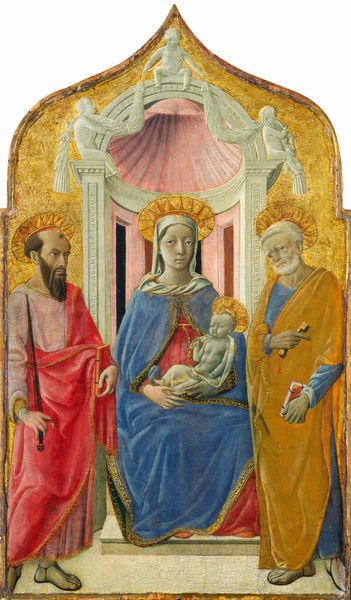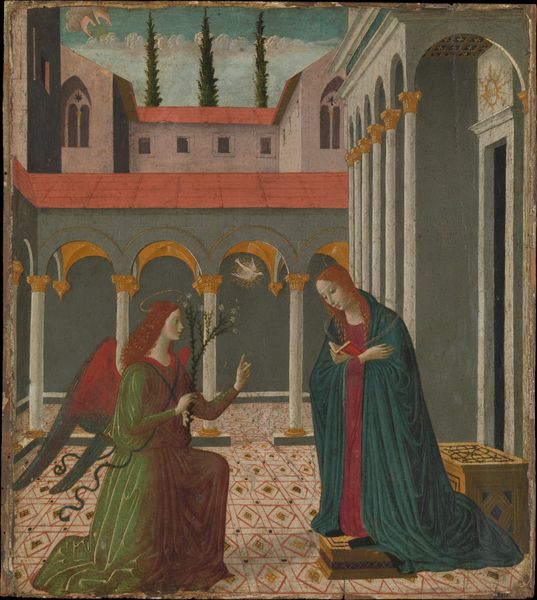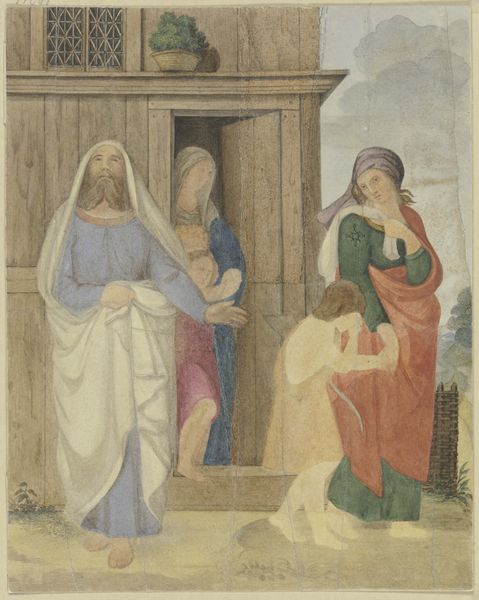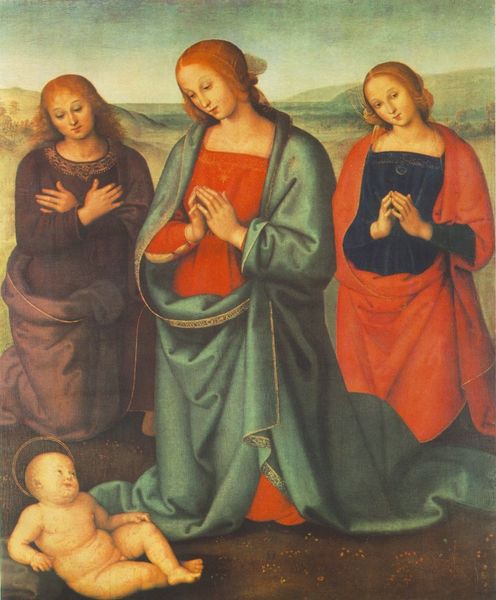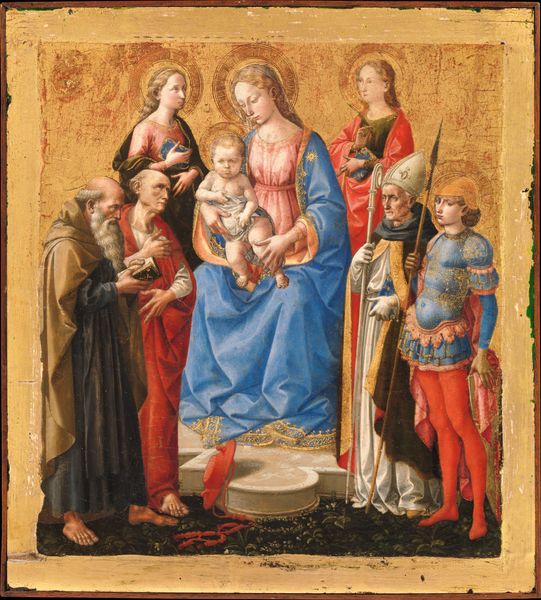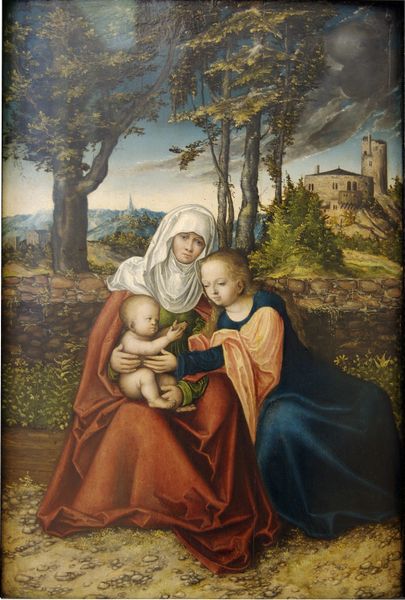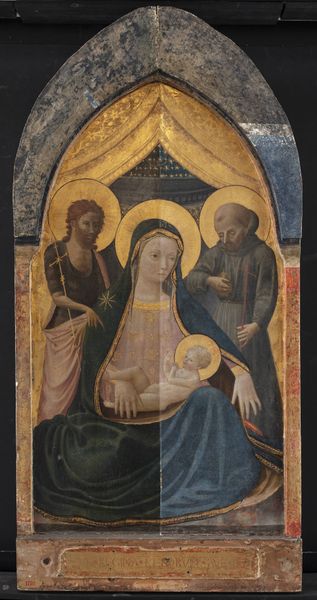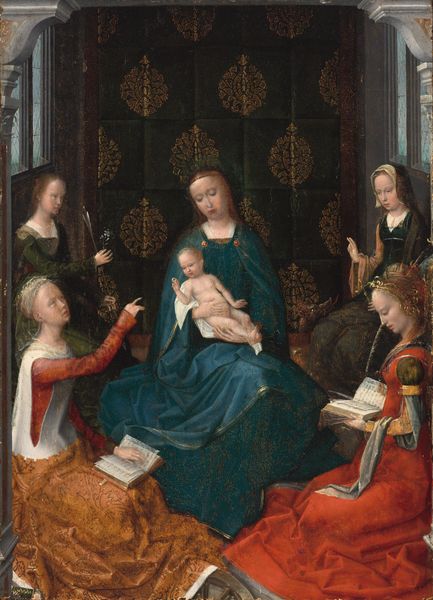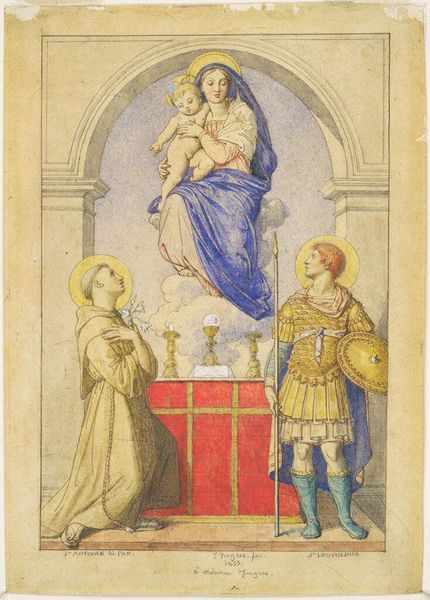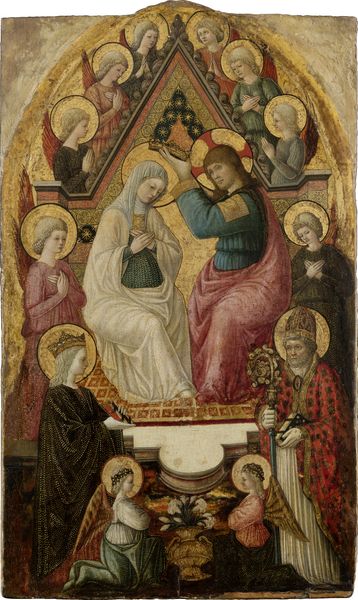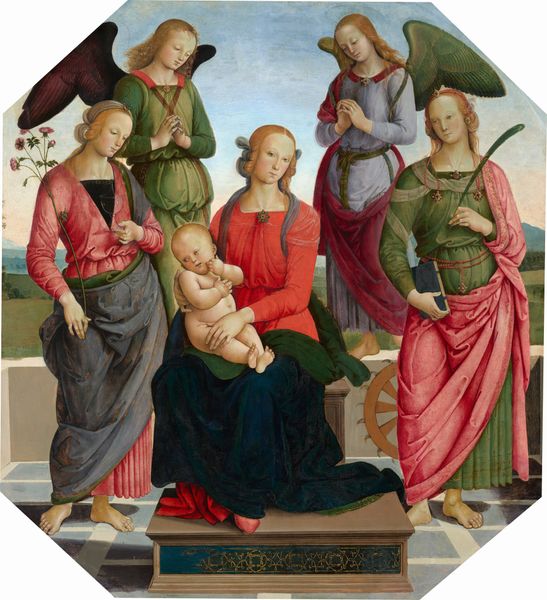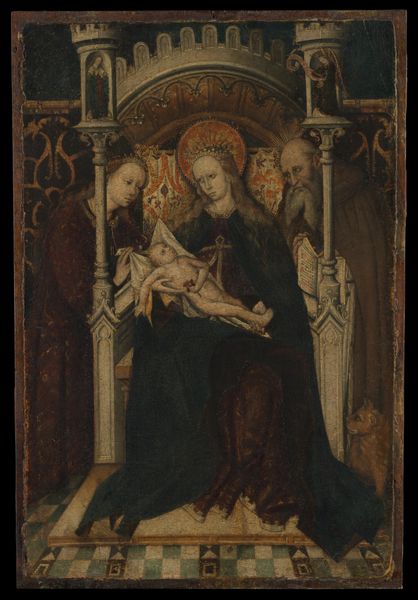
Virgin and Child Enthroned between Saints Cecilia and Catherine of Alexandria 1507 - 1518
0:00
0:00
tempera, painting
#
portrait
#
allegory
#
tempera
#
painting
#
figuration
#
oil painting
#
italian-renaissance
Dimensions: 7 15/16 x 6 1/16 in. (20.2 x 15.4cm)
Copyright: Public Domain
Editor: So, here we have Francesco Morone's "Virgin and Child Enthroned between Saints Cecilia and Catherine of Alexandria," painted in tempera sometime between 1507 and 1518. The two saints are striking, but I'm wondering what symbols jump out to you in this Renaissance painting? Curator: The presence of Saint Cecilia and Saint Catherine flanking the Madonna isn’t just a decorative choice. Consider the cultural memory each figure carries. Cecilia, patron saint of music, often reminds the viewer of harmony, but here, it seems to represent the harmony of the soul. Catherine with her wheel… do you see it as a reminder of knowledge and wisdom prevailing over torture? Or does it evoke something darker? Editor: I see what you mean. The wheel makes me uneasy, given her history, but it could also symbolize resilience. The figures all seem so stoic, as if to bear witness and transcend their suffering. What about the background? Curator: Indeed, they seem stoic in the face of eternity. What a wonderful way to frame their character! As for the landscape... do you notice how it's not just a backdrop but contributes to the symbolic language? Mountains can symbolize obstacles to overcome, or spiritual aspiration. And the water emerging at the foot of Mary's throne reminds me of renewal, rebirth and even a baptism of sorts. Editor: Fascinating! I didn't consider the landscape playing such an active role. This has given me much to reflect upon regarding cultural and emotional meaning of art. Curator: And for me as well. Now when you approach similar pieces you might now reflect deeper into how art can resonate within its particular sociohistorical setting.
Comments
No comments
Be the first to comment and join the conversation on the ultimate creative platform.
